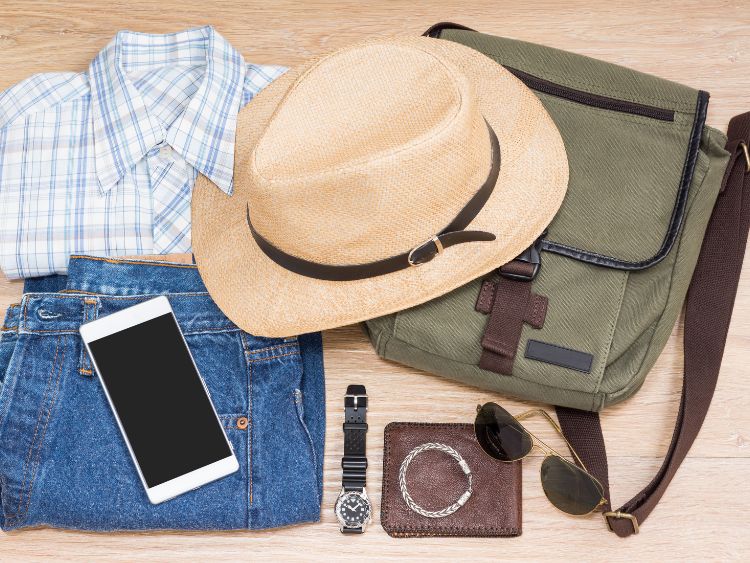Introduction: Fashion shows have long been synonymous with glamour, creativity, and innovation. They are a pivotal event where designers showcase their latest collections, setting trends and pushing the boundaries of style. But have you ever wondered what really goes into these runway spectacles? In this article, we’ll explore the world of fashion shows, from their history to their current influence, while also diving into what makes them such a crucial part of the fashion industry today.
The Evolution of Fashion Shows
Fashion shows have come a long way since their humble beginnings in the mid-19th century. Initially, these events were private and exclusive, often held in a designer’s salon. In those early days, fashion houses would display their creations to an elite audience of buyers and wealthy clients. Over time, these shows evolved into grand spectacles, often featuring elaborate sets, cutting-edge technology, and celebrity attendees.
Today, fashion shows are global events, hosted in major cities such as Paris, Milan, New York, and London. These cities are home to some of the biggest and most anticipated shows, where the world’s top designers present their collections for the upcoming season. The shift from private viewings to public extravaganzas has made fashion shows accessible to a wider audience, cementing their place in popular culture.
Focus Keyword: fashion show
SEO Meta-Description: Step into the dazzling world of fashion shows. Discover the history, significance, and evolving trends that make these runway events essential in shaping the fashion industry.
The Importance of Fashion Shows in the Industry
Fashion shows are not just about showing off clothes; they are crucial in setting trends for the seasons to come. Buyers, editors, and influencers attend these events to get a first look at the designs that will soon hit stores. A successful fashion show can make or break a designer’s season, influencing consumer demand and media coverage.
But more than that, fashion shows allow designers to express their creativity in ways that retail collections may not permit. The runway is a platform for experimental and avant-garde fashion—sometimes the looks are more conceptual than practical. This creative freedom pushes the boundaries of what fashion can be, inspiring designers and consumers alike.
Behind the Scenes: What Does It Take to Produce a Fashion Show?
Ever wondered what happens behind the curtains of a fashion show? The preparation is nothing short of intense. Planning a show involves a team of professionals, from event coordinators to lighting specialists, stylists, and makeup artists.
Here’s a glimpse into the process:
- Venue Selection – Choosing the right venue is crucial. Whether it’s an iconic building or a warehouse with character, the space must complement the designer’s vision.
- Casting Models – Not all models are created equal. Designers are careful to select models who embody the spirit of their collection. Diversity in body shapes, ethnicities, and walks has become a vital aspect of casting.
- Set Design – The runway isn’t just a catwalk; it’s an artistic stage. Designers collaborate with set designers to create an ambiance that enhances their fashion line, whether it’s a minimalist setup or a dramatic, immersive experience.
- Music and Lighting – These two elements can make or break the atmosphere. The music sets the pace, while the lighting highlights the key features of the garments.
The Rise of Virtual Fashion Shows
With the onset of the COVID-19 pandemic, the fashion industry saw a shift from traditional, in-person fashion shows to virtual presentations. Suddenly, the runway was no longer confined to a physical space. Digital platforms opened new possibilities, allowing designers to reach global audiences in a way that was previously unimaginable.
Brands like Balenciaga and Gucci have experimented with fully digital shows, using 3D technology and augmented reality. These virtual shows have created new opportunities for creativity, but they also pose challenges. For instance, how do you capture the essence of a fabric or the movement of a gown through a screen? Yet, despite these challenges, virtual fashion shows are likely to remain a part of the industry even as in-person events resume.
Fashion Show Trends You Can’t Ignore
Fashion shows continue to evolve, and with that evolution come new trends that shape how they are executed and consumed. Here are some of the most notable trends in today’s fashion show landscape:
- Sustainability on the Runway – As the fashion industry grapples with its environmental impact, sustainability has become a central theme in many shows. From using eco-friendly materials to showcasing recycled garments, designers are making bold statements about the future of fashion.
- Inclusivity and Diversity – Long gone are the days when fashion shows featured only one type of model. Today, inclusivity is front and center. Shows now feature a broader range of body types, skin tones, and gender identities, reflecting the diverse consumers who buy these products.
- Immersive Experiences – Technology has taken fashion shows to the next level. From virtual reality experiences to interactive installations, designers are creating immersive environments that engage the senses beyond just the visual.
- Celebrity Endorsements and Social Media – Influencers and celebrities play a bigger role than ever in fashion shows. Whether they’re walking the runway or sitting front row, their presence generates buzz. Instagram and TikTok have become integral parts of the experience, with behind-the-scenes footage and live streams giving fans an insider’s look.
How to Attend a Fashion Show: A Beginner’s Guide
Attending a fashion show is a dream for many fashion enthusiasts. But how do you actually get in?
- Press or Influencer Invite – Many shows are by invitation only. If you’re an editor, journalist, or influencer, you may receive a coveted invite.
- Industry Connections – Sometimes, it’s all about who you know. Networking within the fashion industry could open doors.
- Open-to-the-Public Events – Some shows, particularly smaller ones or those held by up-and-coming designers, may be open to the public. Keep an eye on fashion week schedules for these opportunities.
FAQs About Fashion Shows
- What is the purpose of a fashion show?
- Fashion shows are primarily held to showcase a designer’s latest collection to an audience of industry professionals, buyers, and influencers.
- How long does a typical fashion show last?
- Most fashion shows last between 10 to 20 minutes, although the preparation can take months.
- What happens after a fashion show?
- After the show, designers often meet with buyers and editors to discuss the collection, and some may immediately start selling pieces through pre-orders.
- Do you need to be in the fashion industry to attend a fashion show?
- While many shows are invite-only, some are open to the public, especially during fashion weeks where newer designers showcase their work.
Conclusion: The Ever-Changing World of Fashion Shows
Fashion shows remain one of the most exciting and dynamic events in the fashion industry. From the creative process behind the scenes to the glitz and glamour of the runway, these events shape trends, inspire creativity, and push the boundaries of style. Whether you’re attending in person or watching a live stream, fashion shows continue to captivate audiences around the globe. And as technology and sustainability continue to influence the industry, it’s safe to say that fashion shows will keep evolving, always staying one step ahead of the curve.
Finding the best resources online can be overwhelming, especially when you’re looking for trusted reviews and insights. If you’re a new parent or expecting, this guide to top baby and parenting websites offers helpful resources. Planning a wedding? Look no further than this ultimate guide to wedding websites for comprehensive reviews of popular platforms.
For legal professionals or those seeking legal advice, the leading legal websites review covers everything you need to know. If you’re navigating the financial world, the top loan websites breakdown will be a lifesaver. Similarly, if you’re shopping for insurance or government-related services, this comprehensive review of insurance and government websites provides thorough insights.
For those bitten by the travel bug, the top travel websites review is packed with useful tips and recommendations. Business owners or finance enthusiasts can explore the top business and finance websites to stay ahead of the game. Additionally, fashion lovers and entertainment enthusiasts will find the review of fashion and entertainment websites particularly engaging.
Car enthusiasts aren’t left out either; the top automotive websites review provides an in-depth look at the best platforms for automotive news and features. If you’re passionate about animal welfare, the animal rights and welfare websites review is a must-read. Tech lovers can stay updated with the top technology websites review covering the latest trends and user experiences.
Health-conscious readers will benefit from the review of health and wellness websites, offering the best platforms for staying fit and informed. Homebuyers and real estate investors can dive into the home and real estate websites review for top property resources. Lastly, if you’re a sports fan, the ultimate guide to sports websites will help you find the best sports platforms online.



